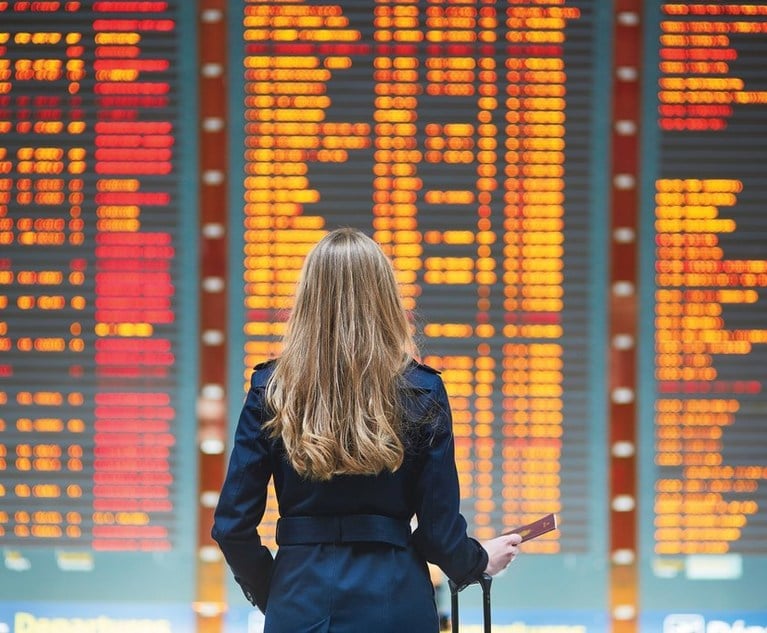As I look into my dirty coffee cup, I see a changing worldahead. The familiar quote, “Wherever the corpse is, there thevultures will gather,” reminds your resident image-smasher of oneof his columns a few decades ago when he compared professionals tothe buzzards that gather at Ohio's Hinckley Lake each spring.According to the legend, there was once a great Indian massacrethere. Each year, the buzzards would return to see if any newmassacres had occurred to provide dinner.
|Professionals tend to live off the problems of others. We don'ttend to go to a surgeon unless we have a serious medical problem.We don't consult a lawyer unless we're in trouble. We entrustaccountants to keep us out of trouble. Social workers generallydon't spend much time with happy families, only those in turmoil.Adjusters would be out of work were it not for injuries, thefts,the destruction of homes arising from natural catastrophes, orlawsuits against people for allegedly causing calamities. We dealwith the corpses of catastrophes, large and small.
|Prophets, some say, are not without honor except in their ownland. Around home, they are generally considered a nuisance.Americans have a love-hate relationship with our “prophets” andprognosticators. We tend to dislike all of those “-ators,” such asprocrastinators, profligators, proliferators, and especiallypontificators. We scour the daily horoscopes, seeking a preview ofthe day. Yet we relegate fortune tellers, soothsayers, tarot cardand crystal ball readers, and the Ouija board to the level of thecounty fair or a back alley. In my case, what stirs the mind is aglance at the leftover coffee grounds in the bottom of my cup as Iperuse the morning newspaper.
|It doesn't take much imagination to see what lies down the road:problems, and big ones at that. Many of those problems can betraced to oil. It is expensive, and it will become even more so asthe 21st century advances. There's talk of returning to the 55mile-per-hour speed limit on our interstates. I doubt that willhappen very soon, though. There is a prediction that Americans willpart with their love of big SUVs. Because there are so many ofthese vehicles out there already, one would imagine that they willbe around for a long time to come. What will occur, however, isfewer miles being driven. For those of us in the buzzard business,this will mean less “road kill” upon which to dine. There will befewer claims, hence less need for auto claim adjusters.
||One could also predict that as gas prices — especially diesel —soar, long-distance trucking will decrease. Railroads are alreadytouting the ability to haul umpteen times as much freight as trucksfor a fraction of the price. That is true. Thus, fewer truckerspopulating the highways will also reduce the accident rates. Theauto insurance industry is thrilled about that prospect, right? Notnecessarily.
|Wall Street Speculators
|Fewer accidents would mean that adjusters would have fewerclaims to investigate, meaning that they could spend more timeinvestigating those that do occur. The amount of loss the industryclaims it loses to fraud could decrease as the accident ratedecreased, and the premium needed to pay for it all would decrease,and so on. The percentage of profit the insurance companies wouldmake will remain the same — that's generally a built-in factor ininsurance rating — but the amount of profit would drop. The extentto which it would drop is unknown. Wouldn't those of us who paypremiums love to see a premium decrease? Sure, unless we own stockin the insurance company and watch our profits drop as a result.Wall Street won't pay insurance CEOs the big bucks to manage acompany that will be bringing in fewer big bucks. Thus, one mightpredict that insurers will try to maintain the big profits bycutting costs elsewhere. Unfortunately, this “elsewhere” usuallyapplies to the claim department.
|Another prediction is that people will reconsider using localand long distance transit. Long-time readers of this column know Iam a rail buff who has advocated high-speed rail and commuterservice for decades. In the past eight years, this mode oftransportation has been a flop. Even Acela, Amtrak's high-speedline between Boston and Washington, can only eke out a maximum of150 miles per hour, a speed achieved only on limited stretches ofstraight track. The conventional Crescent manages more than 110miles per hour on the same track.
|Guns or Butter?
|The old debate continues. Billions are allocated for defense,whereas just pennies are reserved for transit. There were nosurprises in regard to Amtrak in President Bush's final budget.“The administration's proposal calls for $800 million for Amtrak, afigure that is 40 percent less than the current year's grant and isseen as a shutdown number that wouldn't allow continuation of thenational network,” the Passenger Train Journal reported thissummer. “Amtrak's own budget request came several days later, withthe railroad asking for $1.671 billion, including $525 million foroperations, $801 million for capital, and $345 million for debtservice.” Just about every long-distance train departing from NewYork or Chicago is jammed these days. The seats are reserved, buteach one is filled. There are not enough coaches to add to thetrains and there is inadequate funding to fix those that are out ofservice.
||Meanwhile, high-speed rail passenger service has advanced onevery continent except North America. Spain just completed a linefrom Madrid to Barcelona — stretching 380 miles — for 200mile-per-hour plus trains at a cost of $160 billion. Franceregularly runs trains at 200 miles per hour, and Switzerland justfinished a passenger tunnel under the Alps for its high-speed line.Japan's bullet trains have been in operation for decades, and Chinahas a 200-mile-per-hour Maglev monorail that runs from Shanghai toits airport. Argentina has updated a line between Buenos Aires toMendoza, about the same distance as Chicago to New York, for 150mile-per-hour travel. Morocco has also joined the high-speed clubwith a 260-mile line between Casablanca and Rabat, about the samedistance as Chicago to St. Louis.
|Critics of Amtrak complain that it loses money and can never payits own way. But that is true in any country with rail passengerservice. It is expensive to build, maintain, and operate. So do wethink that the truck lines pay to race down the interstates solelywith their gas taxes, or that our gas taxes fully pay for all ofthe road repairs and new construction? Do the airlines own theairports or pay for the FAA? Are they not subsidized to carry themail, the way the railroads once were? These systems were developedback in President Eisenhower's era when our population was 200million. There are more than 300 million of us now, and highwaytravel and airlines alone can't handle the load.
|So what is the prediction? In two months, we'll be electing anew president. What either will do if elected is unknown. How eachwill deal with the problems of our economy, our national debt, ourdeteriorating infrastructure, and our clogged highways and high gasprices are unknowns. The contents of my coffee cup haven't providedan answer just yet.
|Ken Brownlee, CPCU, is a former adjuster and risk managerbased in Atlanta, Ga. He now authors and edits claim-adjustingtextbooks.
Want to continue reading?
Become a Free PropertyCasualty360 Digital Reader
Your access to unlimited PropertyCasualty360 content isn’t changing.
Once you are an ALM digital member, you’ll receive:
- All PropertyCasualty360.com news coverage, best practices, and in-depth analysis.
- Educational webcasts, resources from industry leaders, and informative newsletters.
- Other award-winning websites including BenefitsPRO.com and ThinkAdvisor.com.
Already have an account? Sign In
© 2024 ALM Global, LLC, All Rights Reserved. Request academic re-use from www.copyright.com. All other uses, submit a request to [email protected]. For more information visit Asset & Logo Licensing.








